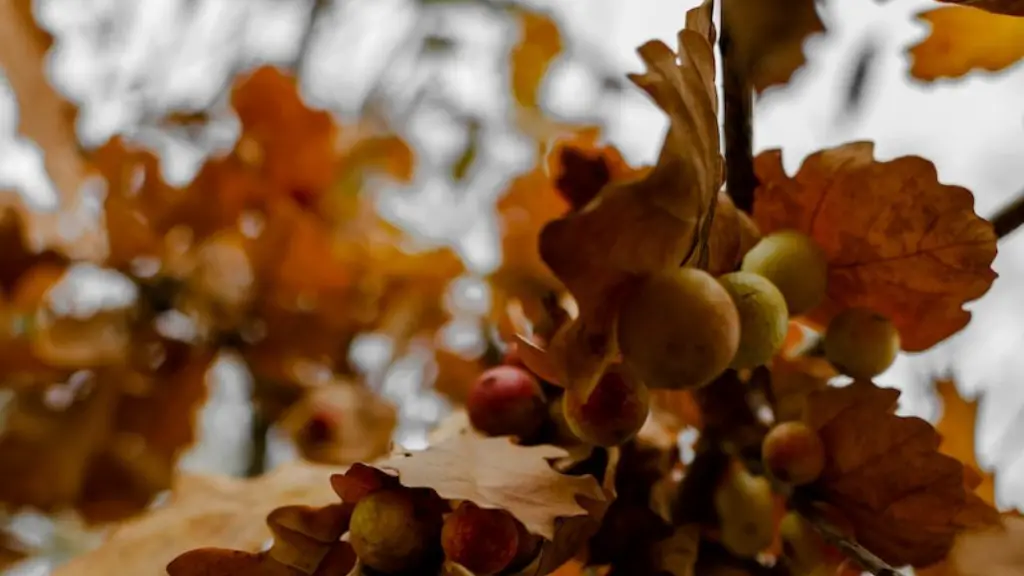Ponytail palm trees, also known as Beaucarnea recurvata, are a species of succulent shrub native to the tropical forests of Mexico, Guatemala and Belize. With their unique trunks that expand at the base and their large green fronds that cascade down, they make an eye-catching addition to any garden. Planting a ponytail palm tree may seem like a daunting task, but with the right techniques, it’s a straightforward process.
Before you begin planting a ponytail palm, you want to make sure you have the proper soil. For the best success, use a well-draining, sandy soil with plenty of organic matter. A potting soil designed for cacti and succulents is ideal for a ponytail palm.
When you’re ready to plant, start by choosing a spot that gets bright but indirect sunlight. Ponytail palms fare best in bright light but can get sunburned if they get too much direct sunlight. Dig a hole that’s large enough to accommodate the base of the trunk and deep enough so that when you put the tree in, the soil level comes just above the root ball. Place the tree in the hole, and fill it in with soil.
After you’ve planted your ponytail palm, you’ll need to water it in. Water it in with a slow trickle of water until the water runs out of the bottom of the pot. This is important to ensure your tree is properly rooted and has enough moisture to survive.
It’s important to note that ponytail palms don’t tolerate cold temperatures. If you live in an area where temperatures dip below freezing, you’ll need to provide protection for your tree. A cold frame or insulators in the form of blankets should do the trick.
Finally, it’s important to fertilize your ponytail palm tree. Its best to use a slow-release fertilizer that’s specially formulated for cacti and succulents. Apply the fertilizer per the instructions on the label, and water it in well. A well-fertilized tree will be much more likely to thrive than a tree that’s left to fend for itself.
With these tips in mind, you’ll be well on your way to planting a beautiful and healthy ponytail palm tree. With some care and attention, your tree should flourish for many years to come.
How To Choose the Right Container
Choose a container that is large enough for your ponytail palm to grow in for several years. Ponytail palms can reach a height of 10-15 feet. So be mindful of this when picking out a container and make sure it’s wide enough to support the tree’s growth. It should also have drainage holes to ensure the soil doesn’t stay soggy.
In terms of material, plastic containers are better than terra cotta because they’re much lighter and easier to move. They also retain more moisture, which is key for a healthy tree.
As your tree grows, you may need to repot it into a larger container if its roots start to outgrow the original one. Do this in the spring when the tree is actively growing, and use the same soil mix you used originally.
It’s best to avoid moving a ponytail palm unless absolutely necessary, as it can be a jarring experience for the tree. But the reward of a larger pot can be worth it!
These tips should help you select the perfect container for your ponytail palm tree. And with a little bit of love and care, you’ll have a thriving tree for many years to come.
Watering and Pruning
Once your ponytail palm is planted and settled in, you’ll want to stay on top of its water needs. During the warm season, water your tree once a week. In colder months, water it every two to three weeks. To determine when it needs water, stick your finger into the soil. If it feels dry to the touch, it’s time to water.
When it comes to pruning, the only pruning your ponytail palm needs is occasional dead frond removal. Remove any brown or discolored fronds with a pair of gardening shears. This will keep your tree looking its best and encourage new growth.
With regular pruning and watering, your ponytail palm will stay healthy and strong for many years to come.
Fertilizing
Fertilizing your ponytail palm is important to keep it growing. For best results, use a slow-release fertilizer designed for cacti and succulents. Apply it in the spring when the tree is actively growing, and follow the instructions on the label for the recommended amount and frequency.
It’s also important to be aware of any warning signs that might indicate your tree is not getting enough fertilizer. Look out for slow or stunted growth, yellowing fronds, and discoloration of the trunk. If you notice any of these signs, increase the amount of fertilizer you’re applying or switch to a higher-quality fertilizer.
With proper fertilization, your ponytail palm will be happy and healthy for many years to come.
Common pests and diseases
For the most part, ponytail palms are relatively resistant to pests and diseases. But there are a few pests that can be problematic. Mealybugs and aphids are the most common pests, and they can cause yellowing of the fronds and discoloration of the trunk. Scale insects can also be troublesome and feed on the tree’s sap, eventually weakening it.
To combat pest infestations, use a natural insecticidal soap or horticultural oil. Apply this directly to the affected areas, and repeat the applications if necessary.
You may also find that your ponytail palm is susceptible to root rot. This is caused by too much moisture in the soil, and it can be fatal if not treated. If you notice signs of root rot, remove the tree from its pot and inspect the roots. Remove any damaged or rotting roots, and replant the tree in a well-draining soil.
By keeping an eye out for pests and diseases, you can keep your ponytail palm healthy and problem-free for many years.
Tips For Quality Care
With proper care, your ponytail palm can thrive for many years. Here are a few tips to help keep it healthy:
- Be mindful of your tree’s lighting needs. It needs bright but indirect sunlight, so avoid putting it in a spot that gets too much direct sunlight.
- Water your tree regularly. Remember that during the warm season, it needs to be watered once a week, and every two to three weeks in colder months.
- Protect your tree from cold temperatures. If temps dip below freezing, cover it with a blanket or insulator to provide extra warmth.
- Fertilize your tree in the spring with a slow-release fertilizer designed for cacti and succulents.
- Keep an eye out for pests and diseases. Regularly inspect your tree for signs of pest infestations or root rot.
With regular care, your ponytail palm should grow and thrive for many years to come.





